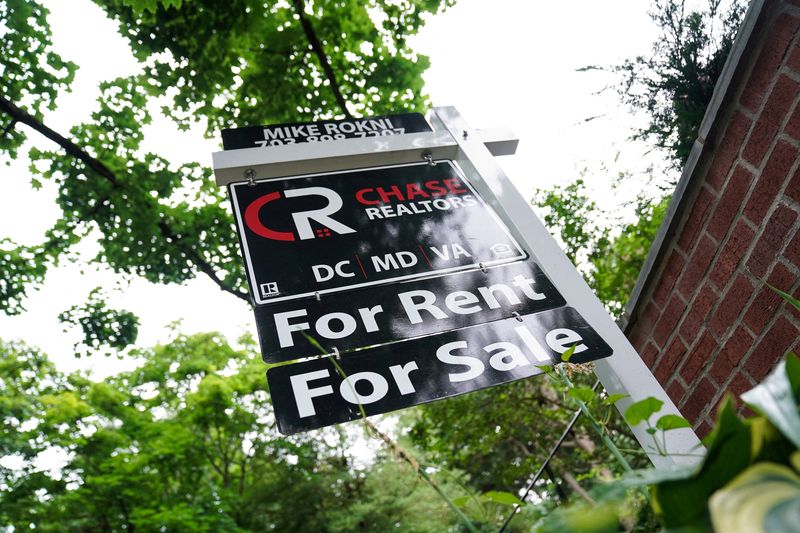
© Reuters. FILE PHOTO: A “For Rent, For Sale” sign is seen outside of a home in Washington, U.S., July 7, 2022. REUTERS/Sarah Silbiger/File Photo
(Reuters) – The interest rate on the most popular U.S. home loan last week shot to the highest since December 2000, helping drive mortgage applications to a 28-year low, a survey showed on Wednesday.
The Mortgage Bankers Association said the average contract rate on a 30-year fixed-rate mortgage climbed 15 basis points to 7.31% in the week ended Aug. 18. That came after yields on the government bonds that influence home-loan rates surged to the highest since the 2007-2009 financial crisis.
Yields on Treasury securities have marched higher throughout the summer as surprisingly strong data on the U.S. economy reshaped investors’ thinking about how long the Federal Reserve will keep interest rates high. The Fed has lifted its benchmark policy rate from near zero in March 2022 to 5.25% to 5.50% currently to beat back the toughest inflation since the 1980s.
In an otherwise resilient economy featuring a strong job market and robust consumer spending, the housing market has stood out as the sector most afflicted by the Fed’s aggressive actions to cool demand and undercut inflation.
As borrowing costs surged, home sales tumbled all last year and a hoped-for recovery this year has yet to materialize. Case in point: Sales of previously owned homes, accounting for the majority of U.S. residential real estate transactions, fell for a second month in July to the lowest pace since January.
The MBA data does not point to improvement any time soon. Its index of home mortgage applications sank 5% last week to the lowest since April 1995. It was the largest weekly decline since April.
Joel Kan, MBA’s deputy chief economist, said, “Homebuyers withdrew from the market due to the elevated rate environment and the erosion of purchasing power. Low housing supply is also keeping home prices high in many markets, adding to the affordability hurdles buyers are facing.”
Applications to refinance existing loans fell to the lowest since December, the MBA data showed.
The vast majority of homeowners with existing mortgages have a loan from before interest rates began surging in 2022, which has been a headwind for refinancing activity. That dynamic is also contributing to the lack of housing supply because it is a disincentive to move.








